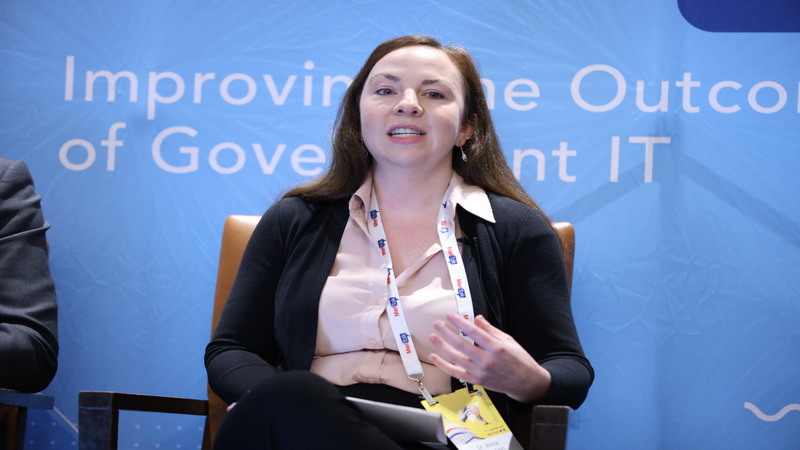
The National Geospatial-Intelligence Agency (NGA) plans to focus on automation of sensor exploitation through the use of AI technologies as part of an ambitious plan to invest in AI tech this year, an agency official said on Jan. 30 at MeriTalk’s Accelerate AI Forum in Washington.
“The big cross-cutting issues that we want to think about as an agency are really leaning into automation of sensor exploitation,” said Dr. Anna Rubinstein, chief of responsible artificial intelligence at NGA, during a panel discussion at the forum event.
“That means investing in a wide array of AI technologies,” Rubinstein said. “So not just computer vision – that might be the most obvious one you would think of – but also smart language models could play a big role in extracting GEOINT [geospatial intelligence] and basic elements.”
“We want to make sure that when we optimize sensors … we know how they’re processing compatible with AI and ML [machine learning] capabilities,” she said.
Rubinstein also talked about the importance of human-machine teams in refining AI technology that the agency will be using.
“We want to lean into human-machine teams and make sure that in the natural course of … the human analyst job, the outputs that they’re creating are feeding the AI and making it better so that they’re both being optimized as a team,” she said.
Another critical area of work the agency is looking to accomplish in the coming months is focusing on boosting workforce AI training to make “sure [they] can hire the right people and educate them while making sure they understand how to apply [AI] responsibly,” Rubinstein said.
And she said NGA is looking to lead in GEOINT governance for AI by establishing standards, promoting data and model interoperability, and having enterprise testing of benchmark capabilities.
Ron Keesing, senior vice president of technology integration at Leidos, said during the same panel discussion that implementing good governance on AI models is a challenge that many government agencies are facing.
“We’re actually developing now that assessment framework to help our government customers who are struggling with how this journey is going to work and walk them through their preparedness for various steps of governance, implementation and maturation of those processes,” said Keesing.
“Because there really is a lot to it,” he continued. “It’s one thing to sort of catalog your models, it’s another thing entirely to think about how you’re going to manage how those models are used over time,” Keesing said.
Kevin Walsh, director of information technology and cybersecurity at the Government Accountability Office (GAO), talked about the role of public-private partnerships in driving the government’s adoption of AI tech.
Government and the private sector “working together … is going to be key to making sure that our AI is at the forefront of technology, but also respecting all the things that we think of as democracy and respecting our values and ideals,” Walsh said.
